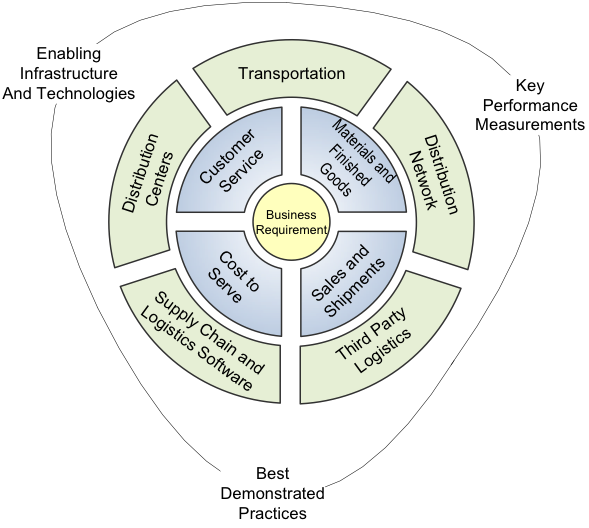 Supply Chain Competitive Advantage is achieved when customer expectations are consistently met and regularly exceeded. Aggressive competition and escalating operating cost for labor, facilities, equipment, fuel, systems, and insurance demand a continuous improvement process that begins with logistics operations excellence founded on best practices.
Supply Chain Competitive Advantage is achieved when customer expectations are consistently met and regularly exceeded. Aggressive competition and escalating operating cost for labor, facilities, equipment, fuel, systems, and insurance demand a continuous improvement process that begins with logistics operations excellence founded on best practices.
Achieving best practices in logistics operations is a fundamental requirement for the winning enterprise. Creating the path forward to achieve best practices is a four-step process providing our customer with an in-depth analysis of current operations, relevant benchmarking, gap and risk/benefit analyses and specific recommendations to improve logistics operations.
Business and Logistics Strategy
- Define the business and customer requirements creating a competitive advantage.
- Define and quantify the value of the competitive advantage.
- Create operational objectives in terms of the current capability and relative costs.
Current Logistics Operations Baseline
- Examine logistics operations, organization structure, key processes, enabling tools and technology, and key performance indicators.
- Collect, organize, and analyze financial, historical production, inventory, shipment, and productivity data.
- Observe logistics operations from management and operator perspectives, including interviews with key personnel in each function.
- Assess interactions with external environments including customers, suppliers, manufacturing sites, maintenance contractors and other external suppliers.
- Interview the key business partners for impact of operations on external suppliers and customers.
- Prepare a SWOT analysis of the baseline conditions.
- Relevant Benchmarking
- Analyze the current logistics baseline identifying the relevant categories for benchmarking.
- Identify documented sources for leading practices in logistics and supply chain.
- Develop benchmarking questions to surveys a relevant cross section of industry respondents.
- Collect and catalog the benchmarking data identifying best practice for relevant categories.
- Prepare a side-by-side comparison between the current baseline and benchmarked best practices.
- Identify gaps between the current baseline and benchmarked best practices.
Path Forward Recommendations
- Assess the risks and benefits associated with the status quo versus best practice.
- Identify key opportunities for improvement.
- Describe recommendations and tactics to close the gap for key opportunities.
- Develop the path forward plan to achieve excellence in logistics.
